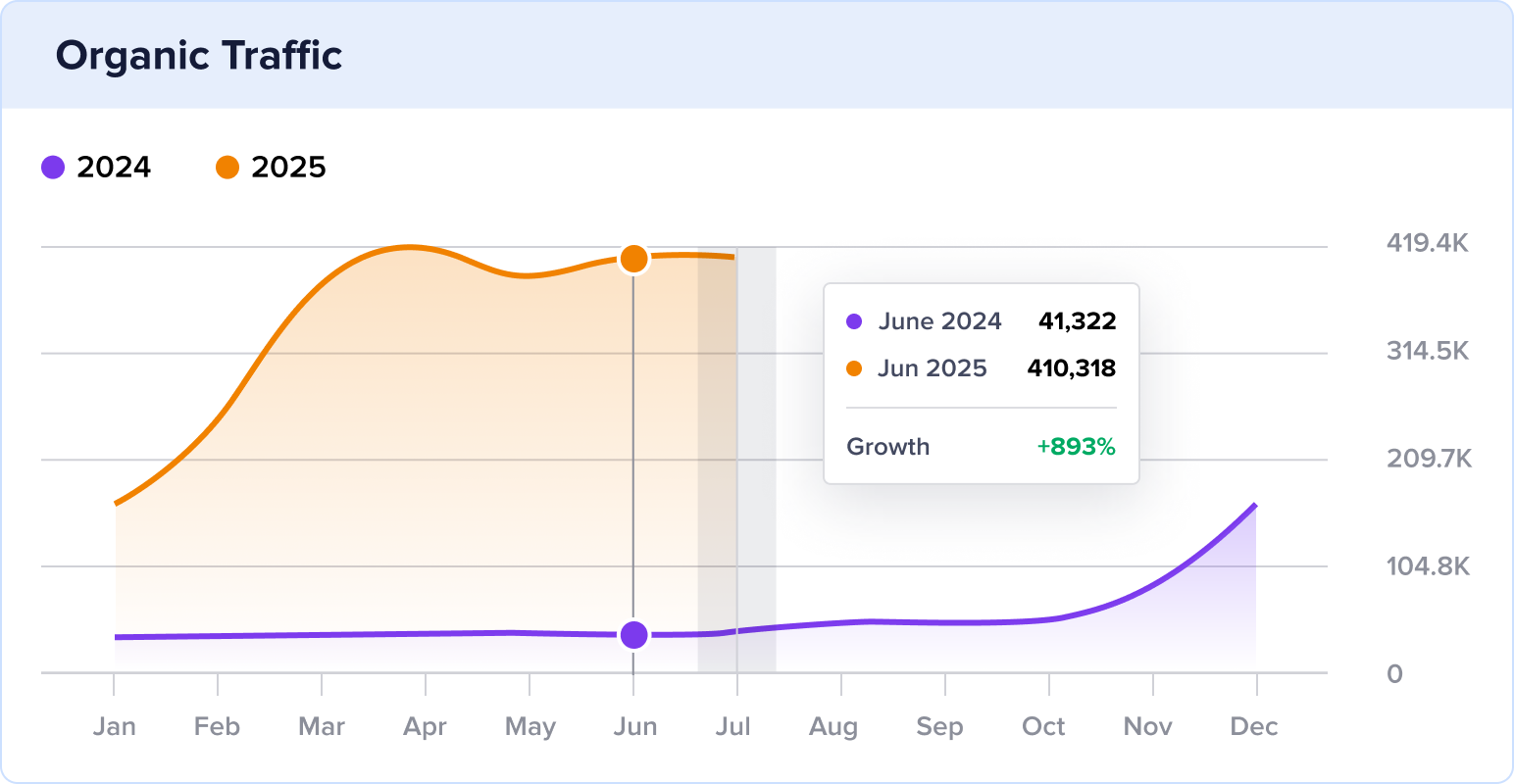How a Local Barber Shop Grew Online Traffic by 2,275% in 3 Months
https://www.theshavecave.com/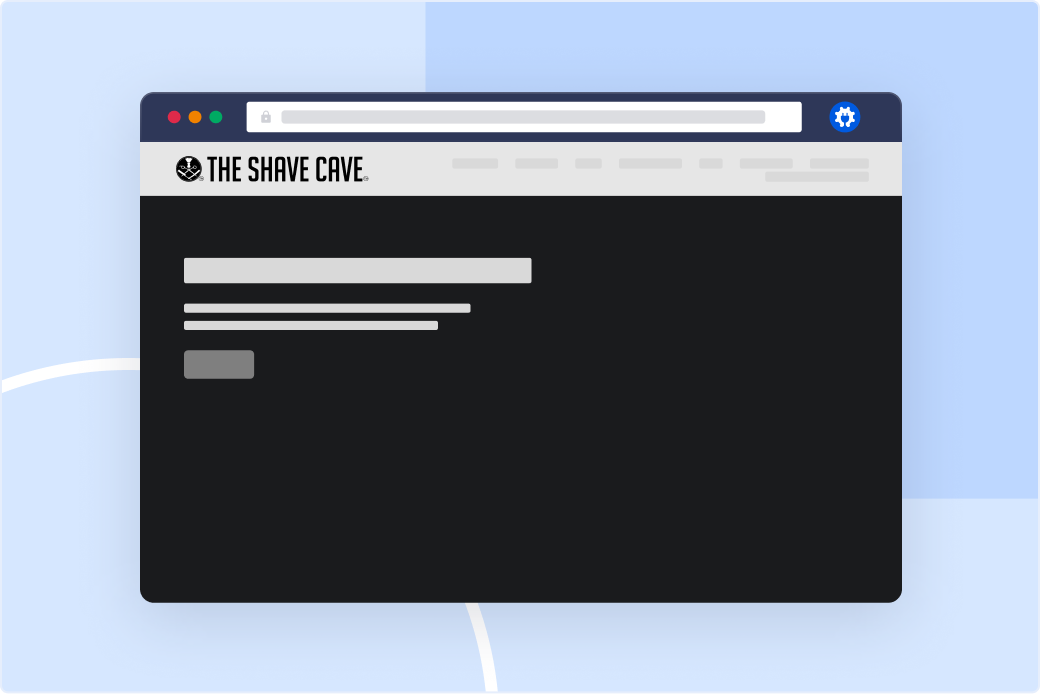
Stats
30.6K to 726.7K Monthly Visits
Industry
Services
Niche
Health & Beauty
Reporting Date
May 2025
How does a local barber shop turn a simple blog post into a traffic-generating machine?
Meet The Shave Cave. A popular men's grooming center in St. Petersburg, Florida.
In 2025, this local staple skyrocketed website traffic by an astonishing 2,275% in just 3 months. This increase took their monthly organic visits from 30.6K to nearly three quarters of a million.
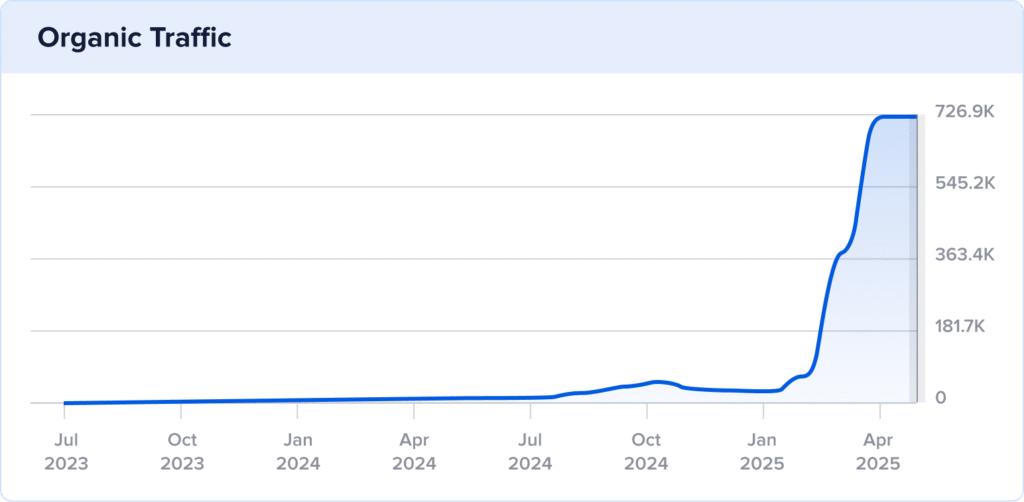
In this SEO case study, we'll explore the blog strategy that launched their organic success.
The good news?
It's super simple to do, and I'm going to share the tools and tutorials to help you replicate it.
In This Article
The Catalyst: How The Shave Cave Reached 726K Monthly Visits
TL;DR: The main driver of The Shave Cave's traffic growth was a single, keyword-optimized blog post on men's hairstyles. This page generates 90% of all site traffic due to strategic keyword targeting, in-depth topic coverage, and image SEO best practices. However, relying so heavily on one traffic-driving page is risky, as future algorithm changes or shifts in search trends could cause major drops in traffic.
1. A Single Blog Post Generates 90% of All Site Traffic
The Shave Cave's incredible traffic growth can largely be attributed to a single, high-impact blog post: “Top 25 Men's Hairstyles for 2025.”
This post alone accounts for an astonishing 90.16% of their total site traffic, showcasing the power of a well-crafted article in a targeted niche market.
At the heart of this success is the content's on-page SEO.
On-page SEO is the practice of optimizing your web pages to appear in search engine results pages (SERPs).
This post aligns with search intent, providing easy access to different hairstyles for men. To reach users searching for this information, The Shave Cave targeted the appropriate keywords in their content.
For example, the focus keywords “mens hairstyles” and “mens hairstyles 2025” appear in the following critical areas:
- H1: This is the main title of the article. It's typically the first thing users see when reaching a web page.
- Introduction: This section has a direct impact on bounce rates. Keep it engaging and use your primary keyword for best results.
- Subheadings: These headings organize the content, making it easier for users to navigate the page.
- URL: The URL slug includes the main keyword, providing another signal to search engines and making it clear and informative for users.
Here, you can see some of these optimizations in the blog post itself:
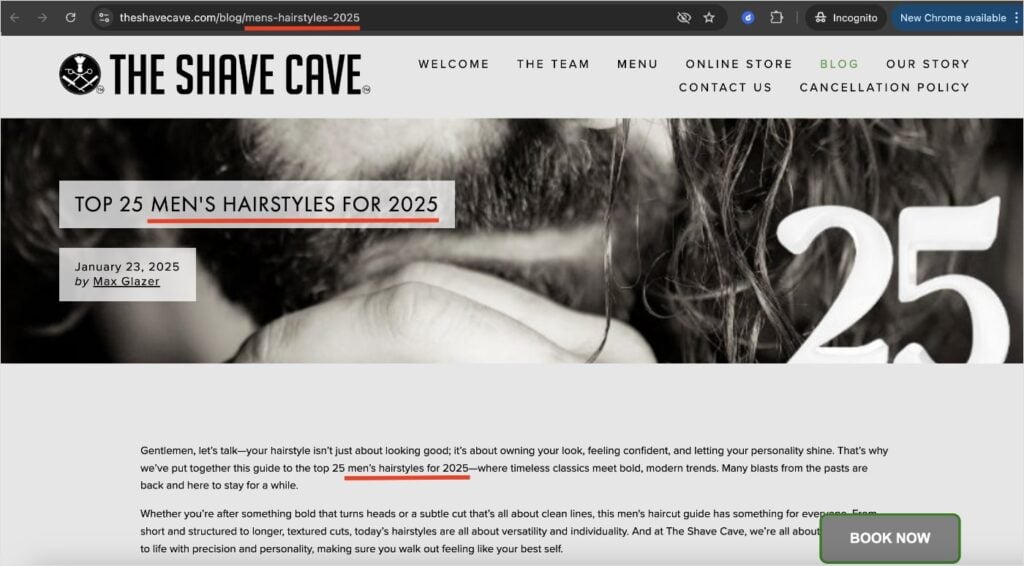
Furthermore, The Shave Cave understands the importance of using related keywords to enhance the article’s visibility.
Related keywords have the same search intent as your primary keyword. The address the same user and topic (or closely related topic) to expand coverage for a broader keyword net.
Some examples for The Shave Cave’s article include “mens hairstyle guide” and “top mens hairstyles.”
Ultimately, this helps them reach a wider audience without keyword stuffing.
The results?
Of The Shave Cave’s 88.8K keyword rankings, this blog ranks for 82.1K of them.
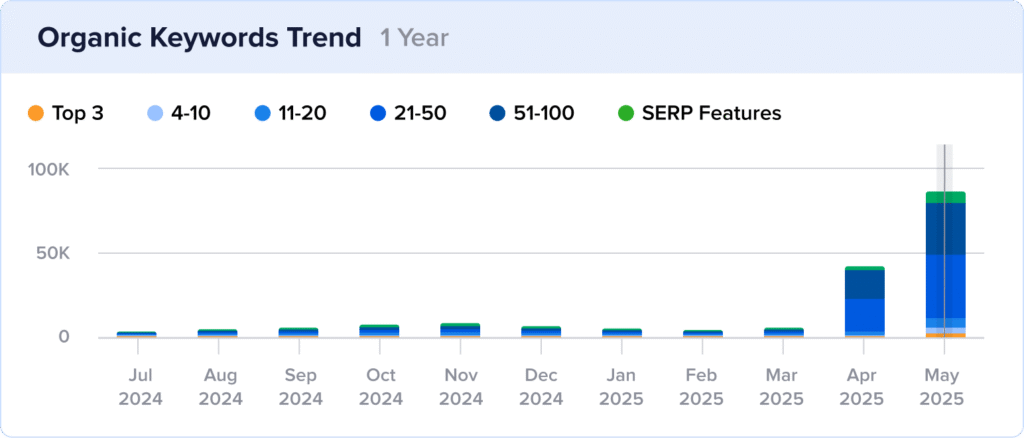
Furthermore, The Shave Cave blog contributes 100% of all keyword rankings.
Note: While these results highlight the effectiveness of The Shave Cave’s blogging strategy, there are important risks to consider. Relying on a single page or traffic source makes your website vulnerable. If an algorithm update hits, your traffic could drop overnight. For long-term growth and stability, it’s always safer to diversify your digital marketing strategy rather than focusing on a single channel or traffic source.
Why This Matters:
The Shave Cave's use of on-page SEO demonstrates a clear understanding of how important it is to target the right keywords. By optimizing for queries related to your business, you can increase your visibility to potential customers.
Their targeted approach has several benefits, including:
- Improved Rankings: The targeted placement of keywords boosts the blog post’s position in search results.
- Higher Engagement: Attracting users who find the content genuinely helpful reduces bounce rates and increases the likelihood of conversion.
- Traffic Sustainability: This SEO strategy ensures a steady stream of organic traffic without the ongoing costs associated with paid marketing tactics.
Overall, it’s a core SEO best practice that belongs in every website owner’s digital marketing arsenal.
How to Do On-Page SEO:
On-page SEO isn’t complicated or necessarily hard, but it does require a strategic approach.
Here’s a quick overview of the most important steps we cover in our on-page SEO guide:
- Perform keyword research.
- Select your focus keyword.
- Optimize your SEO title tag.
- Optimize your meta description.
- Include your keyword in image optimizations.
- Add internal and external links.
- Optimize your URL structure.
For a full explanation of each step (and more), check out the guide linked above the list. It’s very beginner-friendly and walks you through the entire on-page SEO process.
On-Page SEO Tools:
Using the right on-page SEO tools can make all the difference in your content’s visibility. Plus, they’re a huge time-saver when it comes to making sure you’ve optimized all the most important elements.
I recommend All in One SEO (AIOSEO) for WordPress site owners serious about improving their rankings. It’s packed with user-friendly features that help you optimize your content for search engines and users.
For on-page SEO, the TruSEO Analysis tool uses a checklist system to make optimizations a breeze.
You’ll get a Focus Keyphrase Checklist that lets you know when you’ve forgotten your primary keyword in critical areas.

This is really helpful for making quick updates that improve your SEO’s effectiveness. Plus, it’s built directly into the WordPress Editor, meaning you get real-time updates as you write.
Now, let’s see how The Shave Cave builds topical authority within its blog post.
2. Comprehensive Topic Coverage Boosts User Engagement
Another key to The Shave Cave’s success is their ability to create content that thoroughly covers the subject.
Their blog post, “Top 25 Men's Hairstyles for 2025,” does more than just list styles. It offers a rich user experience that covers all facets of the subject.

For example, each of the 25 hairstyles is complemented by:
- High-Quality Images: Each style uses a photo to illustrate the result while enhancing visual engagement.
- Detailed Descriptions: The author describes each style, the hair type it’s best suited for, and instructions for achieving the look. This approach ensures the information is useful and actionable.
- Internal Links: The Shave Cave links to other pages on its website, encouraging content discovery. Unfortunately, these hyperlinks don't stand out against the regular text. This makes it practically impossible for users to find them. (Search engines can, though. Still, I’d highly recommend The Shave Cave to change their hyperlink style to be easily visible.)
Ultimately, these strategies turn what could be a basic list into an engaging resource.
Why This Matters:
High-quality content is the top Google ranking factor in 2025. Because of this, The Shave Cave’s comprehensive content strategy is more relevant than ever.
By providing thorough, well-structured content, they achieve several benefits for their website:
- SEO Performance: Comprehensive and detailed content is favored by search engines, leading to improved rankings. This ensures that The Shave Cave's content is more visible to potential customers searching for men's grooming tips and styles.
- User Engagement and Retention: Offering high-quality images and detailed instructions enhances the user experience, keeping visitors engaged longer and encouraging them to explore additional content.
- Authority Building: Providing valuable information in an accessible format establishes The Shave Cave as a trusted authority in men's grooming. This credibility not only fosters customer loyalty but also encourages positive word-of-mouth and referral traffic.
Incorporating comprehensive topic coverage doesn’t just attract users; it turns them into repeat visitors and potential customers.
This strategy underscores the importance of quality content in building a successful digital presence in today's competitive market.
How to Build a Content Optimization Strategy:
This tutorial shows you how to design a content strategy that improves your rankings.
Here’s a quick overview of the process:
- Use content optimizations tools for SEO.
- Get to know your target audience.
- Set SEO goals that align with your business objectives.
- Perform keyword research.
- Use the on-page SEO techniques discussed in the previous strategy.
- Optimize your technical SEO (like loading times and site crawling).
- Analyze your SEO performance and adjust as necessary.
At its core, creating high-quality content is about knowing your audience and aligning your content to their needs. By doing this, you can simultaneously improve user engagement and keyword rankings.
Content Optimization Tools:
AIOSEO has an AI Writing Assistant that makes it easy to create in-depth, SEO-optimized content right in WordPress. This tool integrates with your SEOBoost account to provide content optimization suggestions directly in the Editor.
For example, the Overview tab shows you the average word count of top-ranking content along with the readability level. This can guide your writing without needing to manually analyze the top search results for your desired keyword.

I also really like how the Optimization Wizard provides additional keyword ideas related to your main topic. This is particularly helpful for ensuring comprehensive topic coverage and maximizing your page’s visibility in search results.

Overall, AI Writing Assistant streamlines the content creation process for writers of any level. It’s intuitive, effective, and provides real-time feedback.
3. Image SEO Increases Visibility in SERPs
In our previous section, we discussed how The Shave Cave uses images to improve engagement.
However, merely using images isn't enough if you want to maximize your website's search potential
Search engines can't “see” images like humans, so just putting them on your webite only takes of site visitors. (Obviously, this is hugely important, but you want to rank too, right?)
To accomodate the other half of the question (i.e., search engine crawlers), you need to make your images SEO-friendly.
This means optimizing them in a way that search engines can understand.
The Shave Cave does a good job of this by implementing the following image SEO best practices:
- Writing descriptive alt text that accurately describes the image
- Using keyword-rich image file names
- Adding relevant schema markup to posts and pages
Let’s look at a quick example.
Here’s an image of a style they call “long curly hair fade.”
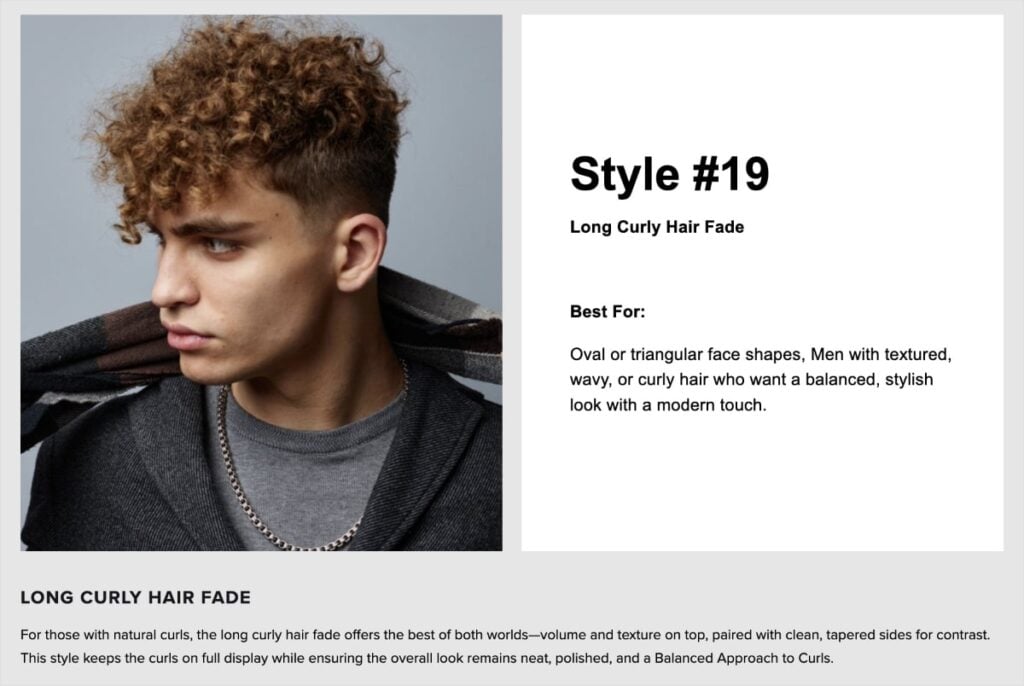
And here are image optimizations for it:
- Alt text: Long curly hair fade men.
- Image file name: Long-Curly-Hair-Fade-Men.jpeg
- Schema markup: Article schema with ImageObject attributes
These image optimizations have been pivotal in The Shave Cave’s visibility in search results.
Not only have they earned them image snippets, which capture user attention…

… but they’ve also earned them rankings in Google’s Image Pack, which features image at the top of standard search results.
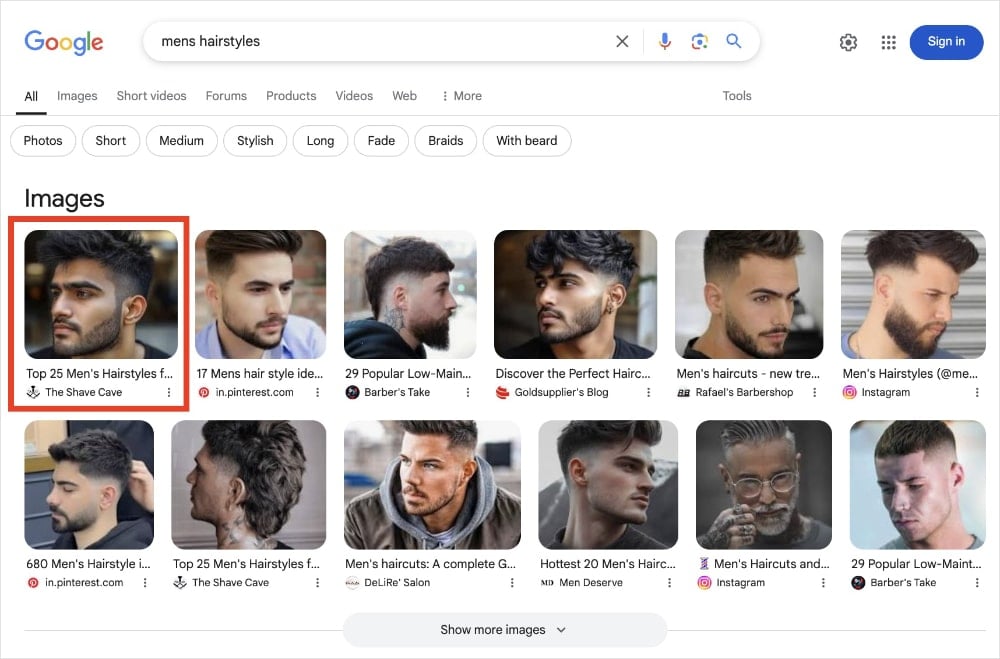
Both types of of SERP features are instrumental for driving clicks and organic traffic.
Overall, The Shave Cave earned 3.7K rankings with image snippets in May. (Notice how many are in the top 3 positions, too!)
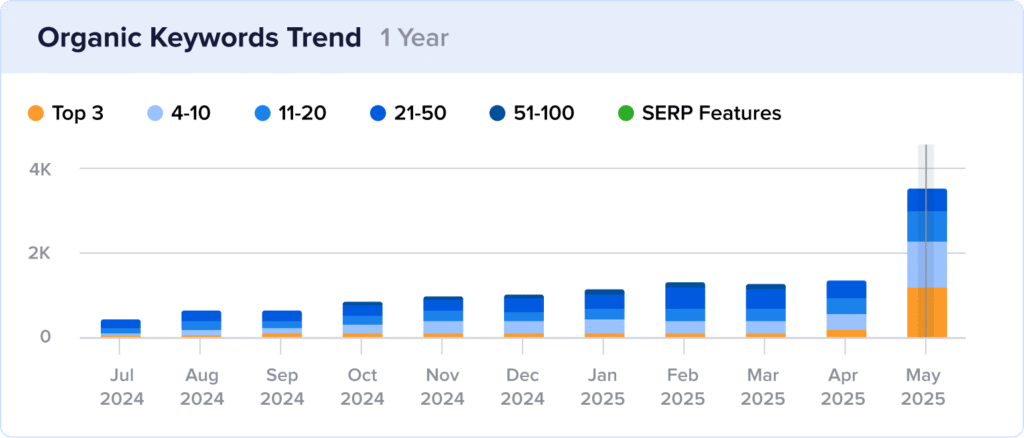
And 1.5K rankings in the Image Pack, proving the efficacy of their image SEO.
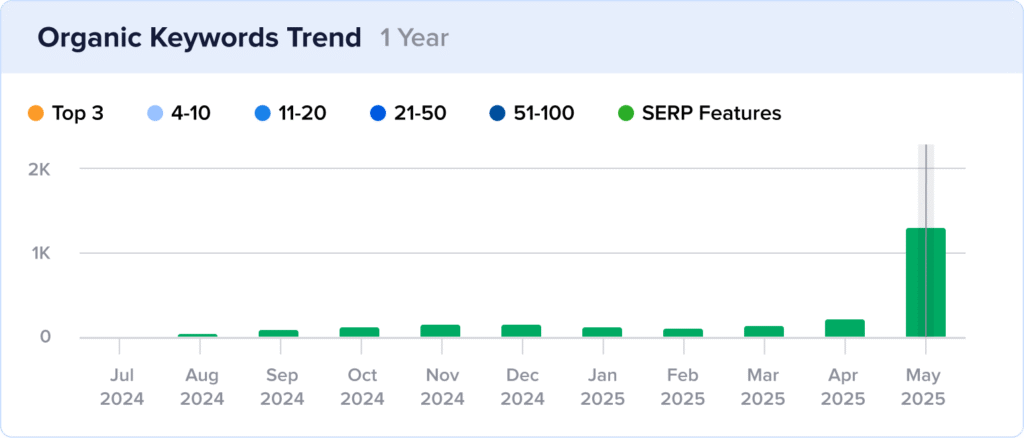
Why This Matters:
With over 1 billion searches on Google Images every day, optimizing your images for search is non-negotiable in 2025. Here are some of its greatest advantages:
- Increased Visibility in SERPs: By appearing in image snippets and Google Image Packs, you capture prime SERP real estate. This can dramatically increase your clickthrough rates (CTR).
- Competitive Advantage: In visually intensive markets, being featured in SERP features can set you apart from competitors. High-ranking images across top positions highlight your brand's appeal, attracting more potential customers.
- Improved Accessibility: Including descriptive alt text not only improves search engine comprehension but also enhances accessibility for users with visual impairments. This commitment to an inclusive user experience builds trust and boosts user engagement.
Ultimately, image SEO is a win-win for everyone. Users get a better UX, search engines can more easily understand your content, and website owners can improve their visibility.
How to Do Image SEO:
Image SEO is pretty straightforward. You just need to know what to optimize and have a primary keyword in mind.
Let’s look at how to optimize image in WordPress:
- Write clear alt text that describes your image. Find a good balance of providing enough context without getting too detailed.
- Use SEO-friendly image file names. Instead of naming your image “image193383.jpg,” use something more descriptive, like “dog-food-for-puppies.”
- Include captions when helpful. Captions can provide additional context when explaining screenshots, graphs, etc. Use them wisely.
- Chose the right image format. There are several formats you can upload to WordPress. JPG is good for images with lots of colors, PNG is high-resolution, and GIF is for animations.
- Create an image sitemap. Sitemaps tell search engines when you update or publish new content. Use an image-specific one to share your latest images as soon as they’re on your site.
These are just 5 best practices, but for even more ideas, check out our image SEO tutorial. It has 18 tips for optimizing images for greater visibility.
Image SEO Tools:
Image SEO is necessary, but tedious.
The good news is that you can use SEO tools to streamline their optimizations.
AIOSEO is an image optimizer plugin that helps you make your images search-friendly automatically. It uses dynamic smart tags that you can customize for various image elements such as, your image titles, alt text, captions, and more.
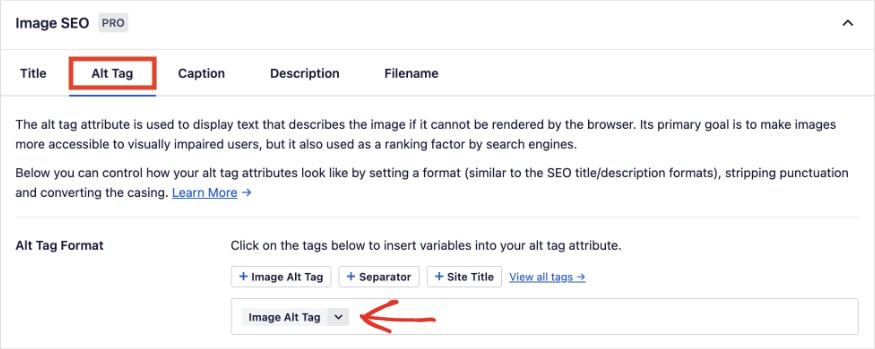
It’s a sure-fire way of guaranteeing no image is overlooked when creating content.
Plus, I like how you can make individual edits on each post or page, too. That means you can have the smart tags as a back up but are free to make edits for any image on your site.
Standout SEO Wins
In addition to the strategies above, there’s a final SEO win I’d like to highlight for The Shave Cave:
Topical Authority Earns AI Overviews
Google’s latest SERP feature, AI Overviews, have become the talk of SEOs and digital marketers. These search results use generative AI to answer a user’s query directly in SERPs.
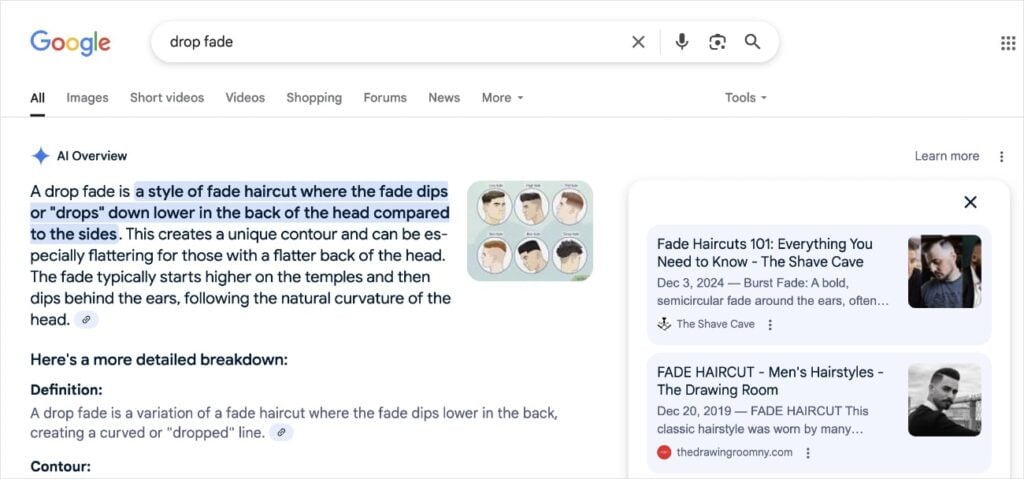
To the right of the AI Overview, users can view the resources used to generate the response. This is where your website can appear.
And for The Shave Cave, they’ve successfully tapped into this new SERP feature.
By May, they’ve already acquired approximately 276 rankings in AI Overviews.

So, how’d they get them?
While there are no concrete methods to getting any type of SERP feature, there are best practices for optimizing your content to appear in AI Overviews.
Here are just a few:
- Establish Topical Authority: The Shave Cave covers men's grooming topics thoroughly. It's clear what the website is about and they type of content and services they offer.
- Answer Popular Questions: They address specific user queries with clear, direct answers. This format is easy for Google to use in SERP features, including AI Overviews.
- Optimize for E-E-A-T: They demonstrate Experience, Expertise, Authoritativeness, and Trustworthiness with content that shows first-hand experience.
- Build Your Brand: The Shave Cave is present on several social media platforms and has over 700 Google reviews. Google wants to use trusted sources in AI Overviews, so creating a cohesive online presence is crucial.
To learn more about optimize your WordPress site for this type of SERP feature, check out this AI Overview Guide.
Tool: AIOSEO has several tools that can help you build topical authority and earn this coveted position in SERPs.
One of the standout features is Author SEO. This tool helps you build and showcase powerful author bios that align with the E-E-A-T framework.
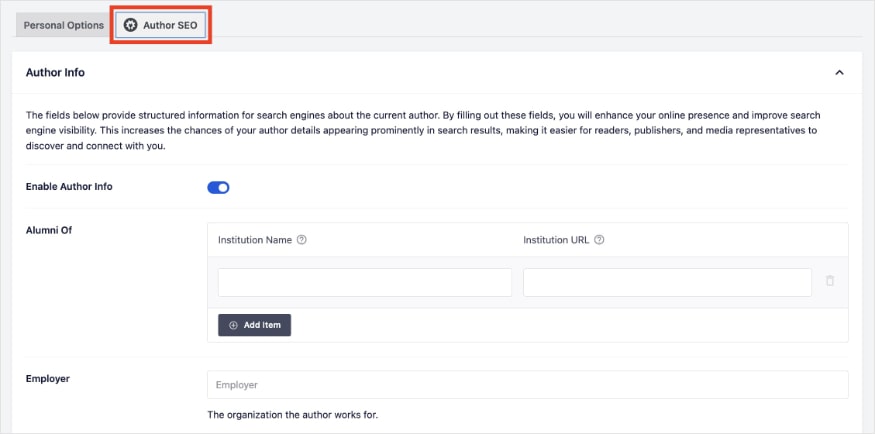
You can also build your online presence using AIOSEO’s Social Media Integration. This feature allows you to connect all your favorite social media platforms to your WordPress site.
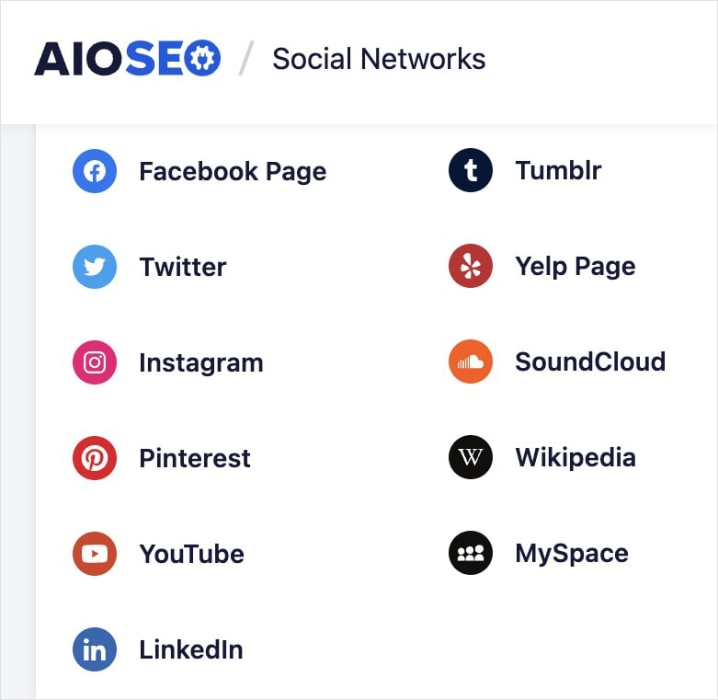
These tools, among others, are just the beginning of what All in One SEO offers to help you build authority in your niche and stand out in SERPs.
Takeaways
In our analysis of The Shave Cave, we've discovered the key strategies that drove their growth. Let's review how you can leverage these insights on your own website to improve your rankings and online sucesss.
Top 3 Strategies to Emulate
- Choose the right keywords to target. I wish every website owner understood the importance of keyword research. It really is the first step to a successful website. The Shave Cave shows how strategic keyword targeting—from primary to related keywords—can skyrocket search rankings. By integrating keywords naturally into your titles, subheadings, and copoy, you make it easier for search engines to serve your website for the appropriate queries. This means more visibility and targeted traffic for your site.
- Craft in-depth content that engages. Don’t just scratch the surface—dive deep into your topics! Addressing all facets of a subject provides a more comprehensive user experience and increases engagement metrics, like time on page. Search engines use this information to assess how userful visitors find your site, which can directly influence your rankings. It also helps build niche authority, helping you become a trusted resource in your industry.
- Enhance your visibility through image SEO. Never underestimate the power of a picture, especially in online content. Images optimized with clear alt text, meaningful file names, and schema markup can significantly boost your visibility in SERPs. Image results are more eye-catching than standard text listings, which translates to higher clickthrough rates and traffic. Images are an easy SEO win, you just have to remember to optimize them.
Bottom 3 Strategies to Reconsider
- Hiding internal links from visitors. Missing out on internal linking opportunities because users can't see them is a common but costly mistake. Ensure your links stand out with distinct styling, guiding visitors effortlessly to related content on your site. The AIOSEO Link Assistant is perfect for identifying and optimizing these links, making your site’s internal navigation a breeze.
- Using multiple H1s for a single page. Have you checked if your pages have a single, unique SEO title? Multiple titles can confuse search engines and dilute your SEO efforts. With the AIOSEO Headline Analyzer, you can refine each title, ensuring your pages are clear and appealing to both users and crawlers.
- Exceeding meta description character limits. When meta descriptions surpass 160 characters, Google will truncate them in search results. This diminishes their impact. Try to keep them descriptive yet concise enough to fit in SERPs. AIOSEO has a built-in SERP preview tool, so you can see your search listing before going live.
Steal Our Winning SEO Strategy: A Checklist for Your Website
Download A Free SEO Checklist
Access our comprehensive SEO Checklist with a single click. We'll deliver it straight to you, putting actionable items with SEO tools and tutorials right at your fingertips.
Enter your name and email to download a free SEO checklist.
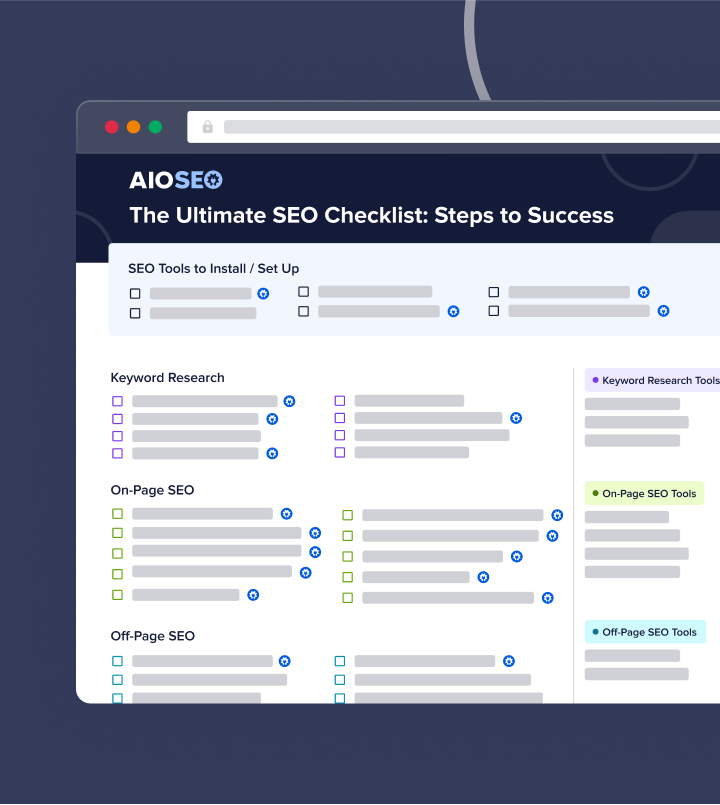
Improve Your Content’s Visibility With AIOSEO
What if you could skip the trial and error and take a direct path to higher rankings?
With All in One SEO, you can replicate all of The Shave Cave's traffic-generating strategies in less time.
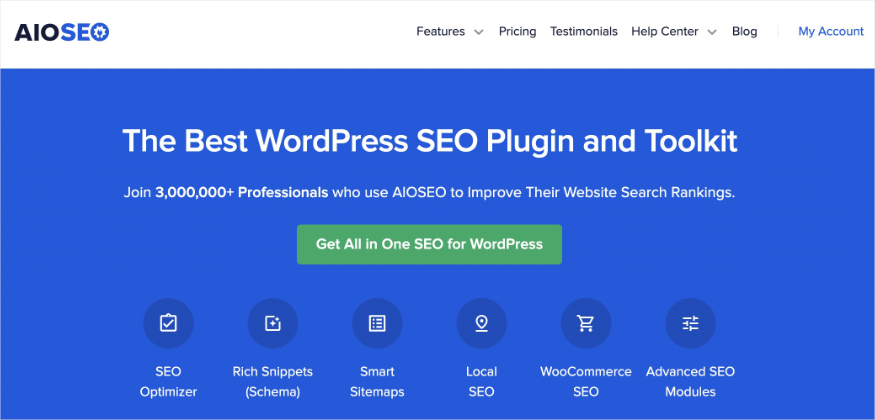
AIOSEO is the best SEO plugin for WordPress. It has over 3 million active users and thousands of 5-star reviews. You'll get powerful, user-friendly tools that help you improve your website’s SEO without coding or technical knowledge.
Some of our customer-favorite tools include:
- TruSEO Score: Level up your content and go beyond a simple pass or fail. TruSEO analyzes your on-page SEO, giving you actionable insights to maximize your content's reach.
- AI Writing Assistant: Connect your SEOBoost account to AIOSEO to get content optimization suggestions directly in the WordPress Editor. You’ll get real-time feedback to improve your content’s visibility in search engines.
- Image SEO: Turn on automatic image alt text and title attributes with a single click. You’ll save time from manual entries while helping users and search engines understand your images.
- Author SEO: Create powerful author bios that showcase your experience and expertise. This addon aligns your content with Google E-E-A-T guidelines and builds trust with readers.
- Social Media Integration: Seamlessly connect your favorite social media platforms to your site and share content with your audience. Available integrations include Facebook, Instagram, Twitter, LinkedIn, Pinterest, YouTube, and more.
- Link Assistant: Get link suggestions, edit anchor text, and add internal links to your content in just 1 click. Link Assistant helps you effortlessly build a better linking strategy.
- Headline Analyzer: Get more clicks with compelling and keyword-rich headlines. This tool analyzes your H1 tag and provides actionable tips to improve it.

